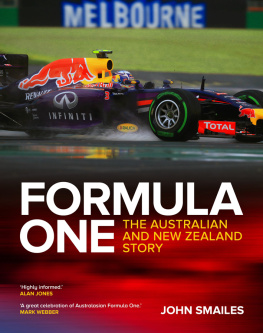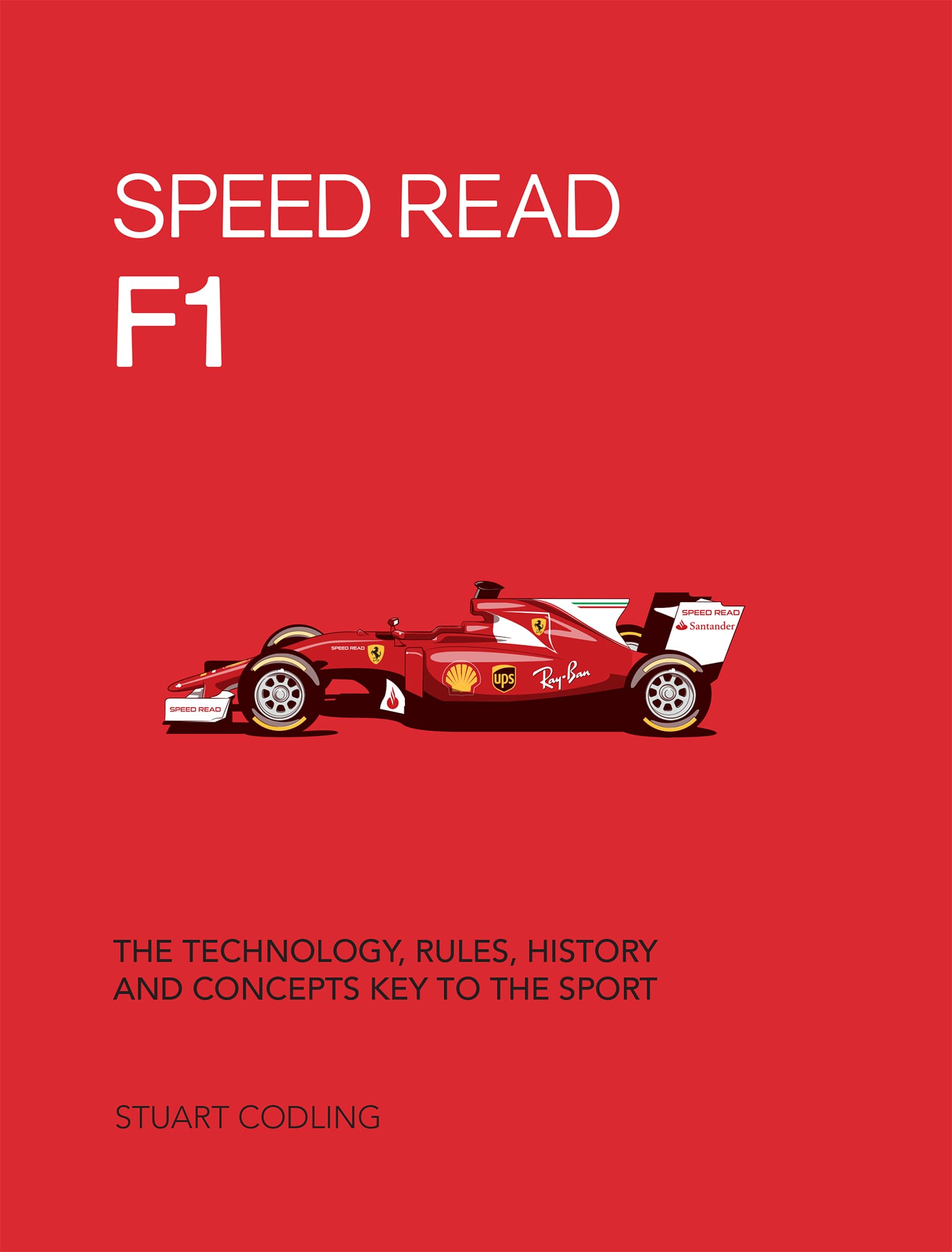INTRODUCTION
IT ALL STARTS WITH A NAME: FORMULA 1
But where did that name come from?
The world racing championship that now encompasses twenty (and counting) annual races across five continents was originally defined by the type of car allowed to compete.
Formula 1 (F1) racing as we know it today started in the European racing scene between the first and second world wars. In that interwar period, the races served to showcase some of the biggest manufacturers of the day, featuring the fastest and most powerful prototype machinery.
World War II put racing on a temporary hiatus. When that conflict ended, motorsports governing body tentatively set out a number of categoriesformulaebased on the cars already in existence. This meant that many of the first F1 cars had been around since the late 1930s and had somehow escaped being melted down for munitions during the war.
The world championship for drivers began in 1950, followed by one for manufacturers in 1958. In the decades that followed, the sport has changed almost beyond recognition. The races have become slightly shorter, the cars massively more complex, and the rules more prescriptive and tightly enforced. No aspect of the sports operation has escaped the reach of commercial thinking.
When Britains King George VI watched the field roar away at the first World Championship Formula 1 Race at Silverstone in May 1950, gasoline was still rationed in his dominion and the circuit itself was a redundant airfield bounded by old oil drums. Today, contemporary Grands Prix are tightly choreographed television spectacles, set in multimillion-dollar facilities, and waving the flag for some of the worlds most prestigious brands.
The years between the first Grand Prix and todays events brought growing pains, controversies, civil wars, glory, and, sadly, death. When the starting lights go out on a Grand Prix Sunday, every part of the spectacle has been shaped by lessons learnedoften the hard wayover seven decades of rip-roaring action.
TECHNOLOGY
TECHNOLOGY
ENGINES
Formula 1 engines today put their road car cousins to shame in terms of fuel efficiencywhile still squeezing around 1,000 horsepower from 1.6-liter V-6s. Manufacturers prefer the term power unit, since the total horsepower output is a cooperative effort between the turbocharged internal combustion engine and a cutting-edge hybrid system.
When a turbocharger expels heat, that energy can be recovered, stored, and deployed at will, either to provide an instant power kick or to eliminate turbo lag, one of the main disadvantages of turbocharging. A turbo works by using exhaust gases to drive a pump, compressing the air that goes into the engine. While the turbo spins up, there is a natural delay between pressing the accelerator and getting the power boost. An F1 cars hybrid system uses recovered heat energy to keep the turbo spinning, so the boost is always ready.
To keep technology focused on efficiency, F1 rules enforce a strict limit on the amount of fuel carried by cars (105 kilograms) and how fast it can flow (100 kilograms/hour). Since 2010, no refueling has been allowed during races.
F1 engines have changed a great deal since the world championship began in 1950, when 1.5-liter supercharged or 4.5-liter naturally aspirated engines of any cylinder count were permitted. For most of that time, engines were ear-splittingly loud; today, though, race cars physically smaller engines are restricted to 15,000 rpm and breathe through turbochargers, with the side effect of muffling the exhaust sound.
To reduce costs, engine development is restricted. Beginning with the 2017 season, teams are limited to four complete power units per driver per season. Once a driver burns through the quota of components, he or she begins to incur increasingly severe grid penalties. This gives the manufacturers a major incentive to focus on reliability as well as power and economy.
FUN FACT
The fastest-revving F1 engine in history was the Cosworth CA2006, a 2.4-liter V-8 that exceeded 20,000 rpm. Since 2014, engines have been limited to 15,000 rpm.
HISTORICAL TIDBIT
The British team BRM were responsible for two of the strangest engines in F1 history, a 1.5-liter supercharged V-16 and a 3-liter H-16 (essentially two V-8 blocks, flattened and joined). Neither were very successful but they made a great noise.
KEY PERSON
UK driver Andy Cowell is the chief of Mercedes-Benz High Performance Powertrains, whose power unit has been the performance benchmark throughout the hybrid turbo era.
TECHNOLOGY
CHASSIS
If the engine is the heart of a Formula 1 car, the chassis is its spine. Every element connects to the chassis and relies on its strength.
In the early days of the World Championship, chassis were typically built as a steel frame. This could take the form of a flat perimeter design that looked like a ladder, or the frame could appear as a more sophisticated, three-dimensional network of tubing known as a space frame. The engine, gearbox, suspension, and outer body panels were then mounted on the frame, usually with the engine in front of the driver.
During the late 1950s and early 1960s, three key changes transformed the sport. First, the Cooper team started winning racesand then championshipswith cars whose engines were mounted behind the driver, giving a better handling balance.
Then another team, Lotus, introduced a car whose outer skin was designed as an integral, load-bearing part of the chassis rather than just being dead weight. This evolved into using the engine as part of the cars structure, a change that Ford underwrote in its development of a new V-8 in 1966.
Manufacturers built chassis from steel and aluminum until 1981, when McLaren shocked the F1 world with the MP4, which featured a carbon-fiber chassis. Carbon fiber quickly became the chassis material of choice, and remains so to this day.
A modern F1 car is built around a central carbon-fiber structure called a tub, which includes the cockpit. These tubs have to pass a series of static load and crash tests, including a simulated rollover. The cockpit wall, for example, must withstand an impact equivalent to 250 tons.
To keep the competition as fair as possible throughout a Grand Prix weekend, the cars must weigh at least 728 kilograms, including the driver but not the fuel. Each cars weight is checked at random during the weekend and again immediately after the race.
FUN FACT
Carbon fiber is a flexible woven material that arrives in a roll, like carpet. Its cut into pieces of specific size and shape, layered in a mold with resin, and finally vacuum-sealed and baked at high pressure.
HISTORICAL TIDBIT
The first McLaren Formula 1 car was built of an unusual composite material, Mallite, which is made of balsawood sheets lined with duralumin, an early type of aluminum alloy. Though lighter than steel, it was difficult to work into curved shapes.












